Search Results
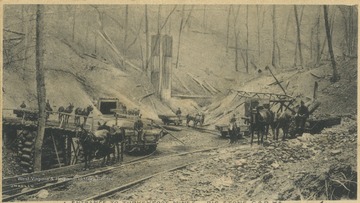
- IDNO:
- 044868
- Title:
- Entrance to Turkeyfoot Mines, Big Stone Gap, Va.
- Date:
- ca. 1907
- Description:
- See original for correspondence. (From postcard collection legacy system--Non-WV.)

- IDNO:
- 044869
- Title:
- Trinity Church, Staunton, Va.
- Date:
- ca. 1913
- Description:
- Published by The McClure Co., Inc. See original for correspondence. (From postcard collection legacy system--Non-WV.)
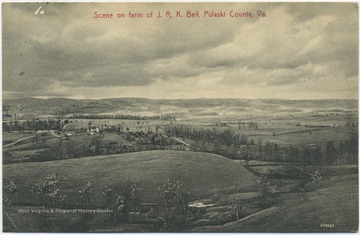
- IDNO:
- 044870
- Title:
- Scene on Farm of J. R. K. Bell, Pulaski County, Va.
- Date:
- ca. 1910
- Description:
- Published by Steger-Smith Postcard Co. See original for correspondence. (From postcard collection legacy system--Non-WV.)
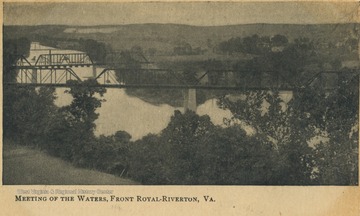
- IDNO:
- 044871
- Title:
- Meeting of the Waters, Front Royal-Riverton, Va.
- Description:
- (From postcard collection legacy system--Non-WV.)
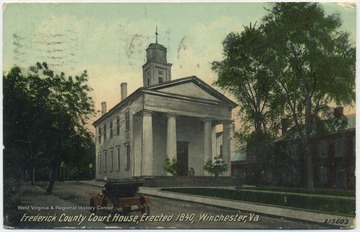
- IDNO:
- 044872
- Title:
- Frederick County Court House, Erected 1940, Winchester, Va.
- Date:
- ca. 1912
- Description:
- Published by A. W. Bailey & Co. See original for correspondence. (From postcard collection legacy system--Non-WV.)
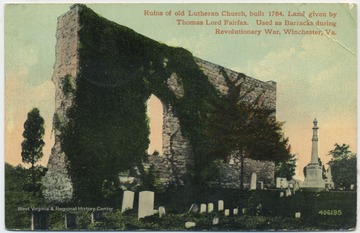
- IDNO:
- 044873
- Title:
- Ruins of Old Lutheran Church, Built 1764, Used as Barracks During Revolutionary War, Winchester, Va.
- Date:
- ca. 1914
- Description:
- Land given by Thomas Lord Fairfax, this old Lutheran Church was used as barracks during the Revolutionary War. Published by the Williamsport Paper Co. See original for correspondence. (From postcard collection legacy system--Non-WV.)
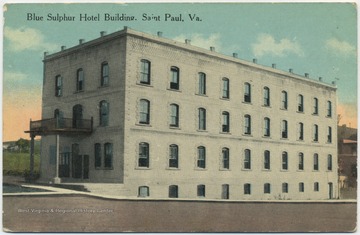
- IDNO:
- 044874
- Title:
- Blue Sulphur Hotel Building, Saint Paul, Va.
- Description:
- Published by Greear Bros. & Hurt. (From postcard collection legacy system--Non-WV.)
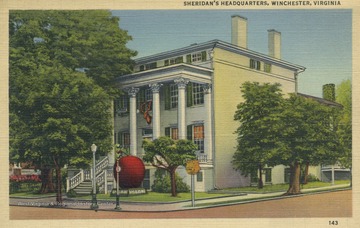
- IDNO:
- 044875
- Title:
- Sheridan's Headquarters, Winchester, Va.
- Date:
- ca. 1951
- Description:
- Postcard reads, "General Sheridan occupied this home during one of the famous Winchester campaigns and from it began his famous ride to the Battle of Cedar Creek, 'twenty miles away'". Published by Marken & Bielfied Inc. See original for correspondence. (From postcard collection legacy system--Non-WV.)
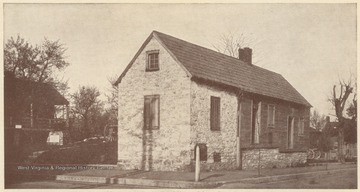
- IDNO:
- 044876
- Title:
- Washington's Office, Winchester, Va.
- Description:
- Postcard reads, "After Gen. Braddock's defeat (July 1755) by the French and Indians near Fort Duquesne, Lieut.-Col. George Washington was given command of the colonial forces on the frontier. Washington then built Fort Loudoun at Winchester, and while supervising this work (1756-7) he occupied the building shown above. During this time three companies of Virginia troops were quartered within a stockade built upon the lot to the southward. Prior to the French and Indian War (1749-53) Washington had used this building as an office while employed by Lord Fairfax as a surveyor." Published by Shenandoah Publishing House. (From postcard collection legacy system--Non-WV.)
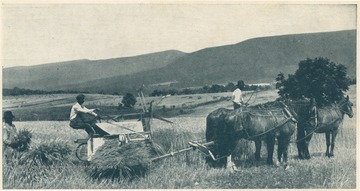
- IDNO:
- 044877
- Title:
- Shenandoah Valley Harvest Scene
- Date:
- 1924
- Description:
- Postcard reads, "The above is a typical harvest scene in the highly productive Valley of Virginia. In the foreground, fertile, undulating fields; in the background, a graceful, forested mountain ridge. George Washington called the Shenandoah Valley the "Garden of America". When in 1861, the Confederate government placed Gen. J. E. Johnston in command in the Lower Valley, he said that section alone would feed an army of 40,000 men. And in this calculation only three counties were considered. Little wonder that the Shenandoah Valley was known as the "Granary of the Confederacy." Published by Shenandoah Publishing House. (From postcard collection legacy system--Non-WV.)
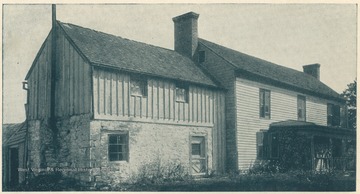
- IDNO:
- 044878
- Title:
- Fort Lewis, Near Staunton, Va.
- Date:
- ca. 1927
- Description:
- Postcard reads, "The stone section of this ancient house, two miles east of Staunton, is doubtless the oldest structure in Augusta County. Here lived Col. John Lewis, pioneer settler, who came with some thirty Scotch-Irish about the year 1732, when Augusta was a no-man's land. Lewis, a fine type of frontiersman and one of the first magistrates of Augusta, died in 1762 at the age of eighty-four, his grave being near the house above. His five sons were conspicuous men of their times; Thomas laid out Staunton in 1750, while Andrew was the victor at Point Pleasant and a general in the Revolutionary War." Published by Shenandoah Publishing House. See original for correspondence. (From postcard collection legacy system--Non-WV.)
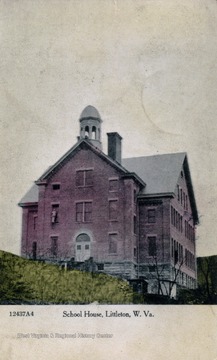
- IDNO:
- 044879
- Title:
- School House Building, Littleton, W. Va.
- Description:
- Several story brick school house in Littleton, West Virginia.











